Change is scary for most people but with the right strategies, processes and tools, it can be a positive experience!
“Oh we can’t change that, that’s how we’ve always done it…” Have you ever heard this statement from someone in your team? I know we hear it almost every week and if change isn’t managed positively, it can be extremely detrimental to not only your team but your clients and your business!
At the end of the day, we are all here to be the best versions of ourselves and provide the best service to our self, our team mates, our bosses and anyone else that we may come across in our day-to-day work environment. This goes for your business too! If your business isn’t changing, growing and evolving, you can pretty much expect it to become stagnant and stay exactly where it is right this very minute!
So, what is “Change Management” and how can we make it a positive experience for everyone involved each time? Change management is the strategy, process, tools and techniques to manage how change occurs and is communicated with respect to documents, equipment and practices within your business.
There are 4 main strategies that need to be considered when implementing positive Change Management within your business;
- Why are we implementing change?
- What are we changing?
- Who is responsible for the changes?
- How are you managing expectations & training?
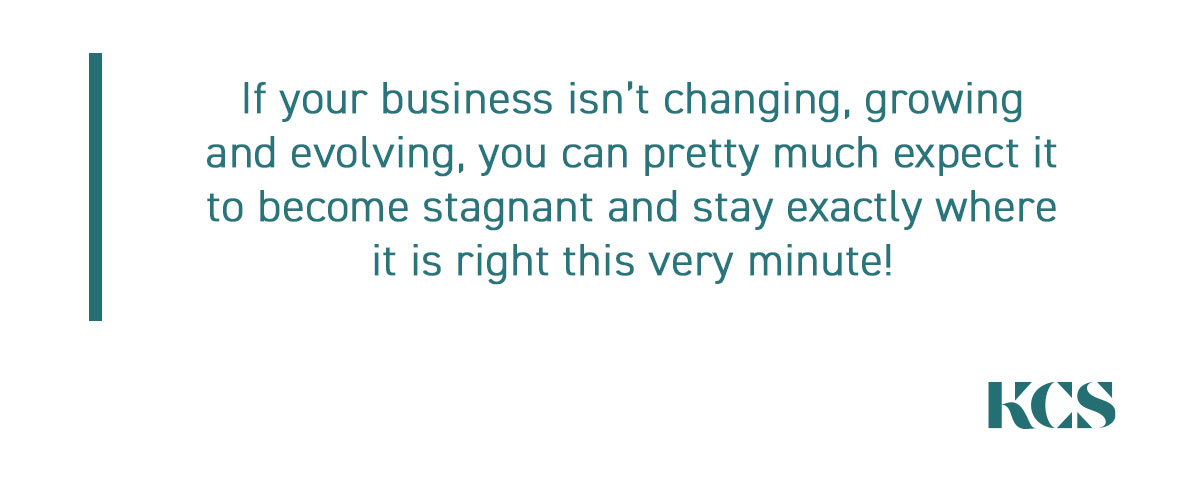
Strategy #1 – Why Are We Implementing Change?
Change is scary for most people but when we understand the “Why” and can communicate that clearly (See Strategy #4 below) it can be a positive experience! When you want to implement change of any size or type, before you even start, you need to think about the “Why”, or rather the “Purpose” for that particular change.
When people have a “Why” it provides the motivation that drives them towards a satisfying future, a future where your change will benefit them. It will support them to get onboard with the changes you want to make and be a “Change Cheerleader” rather than a “Change Grouch”.
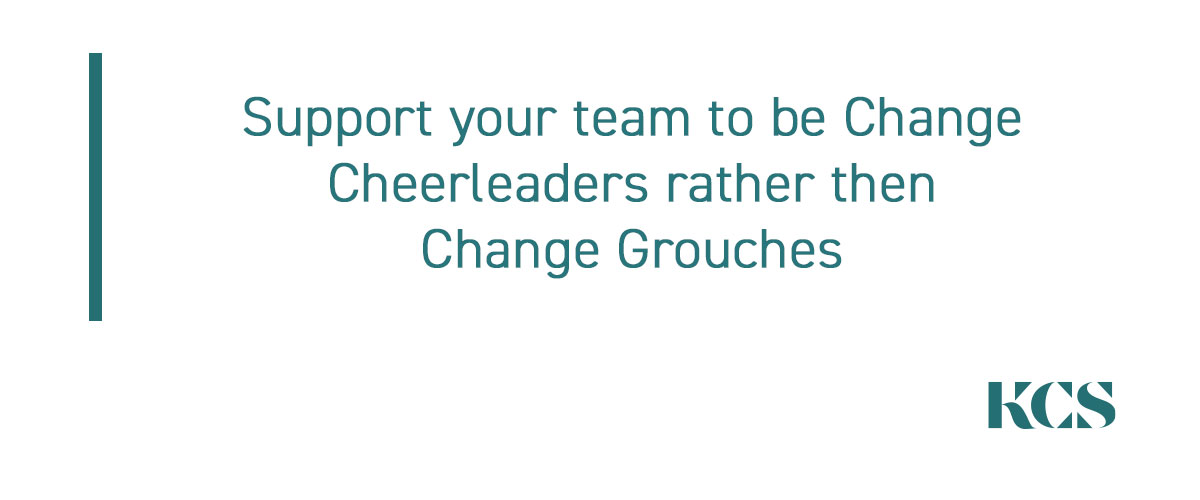

Strategy #2 – What Are We Changing?
Now we know “Why” we are implementing change, we need to ensure that the integrity of the applicable systems & processes throughout the change are kept in tact. The 4 types of change that can occur and facilitate the interactions between product, people and processes (3P’s) form the foundations for what we are changing;
- No Changes (Stick with me, it will make sense) – When existing processes, software, equipment etc are replaced without changing the end goal or compromising safety.
- Emergency Changes – Changes that occur during an emergency situation.
- Minor Changes to Practice, Procedures, Form and Documents – Non- critical changes (E.g. Typographical amendments, slight rewording of a step, change to numbers or minor changes that do not alter the intent).
- Major Changes to Practice, Procedures, Form and Documents – When there is a change in how the process is to be performed or new specifications added.
When we understand the foundations, we can build on them by assessing (either formally or informally) any possible accompanying risks that may need to be addressed to ensure what we are changing keeps the current systems and processes in tact. Transforming them without negatively affecting your product, people or processes, ultimately your business.
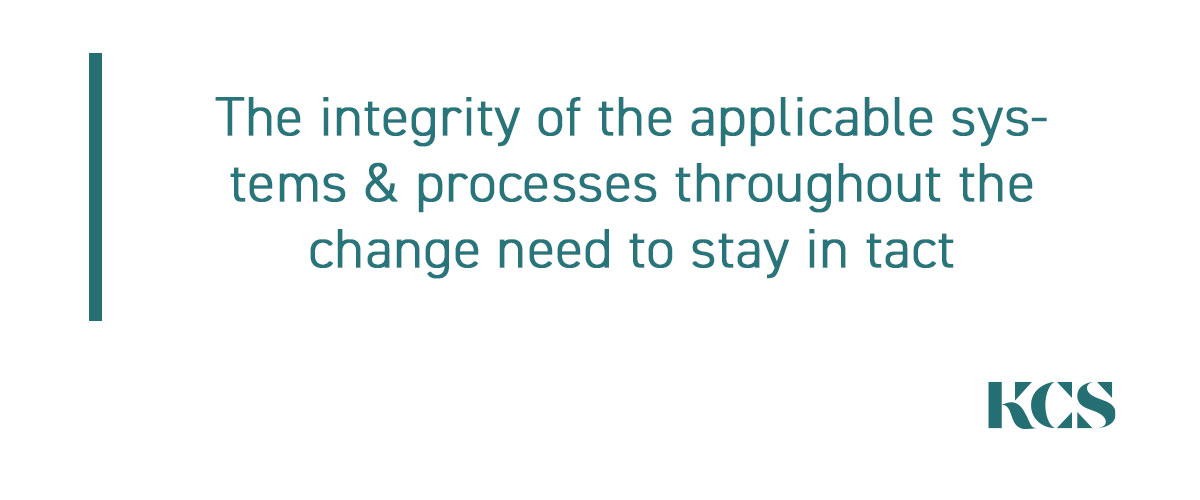
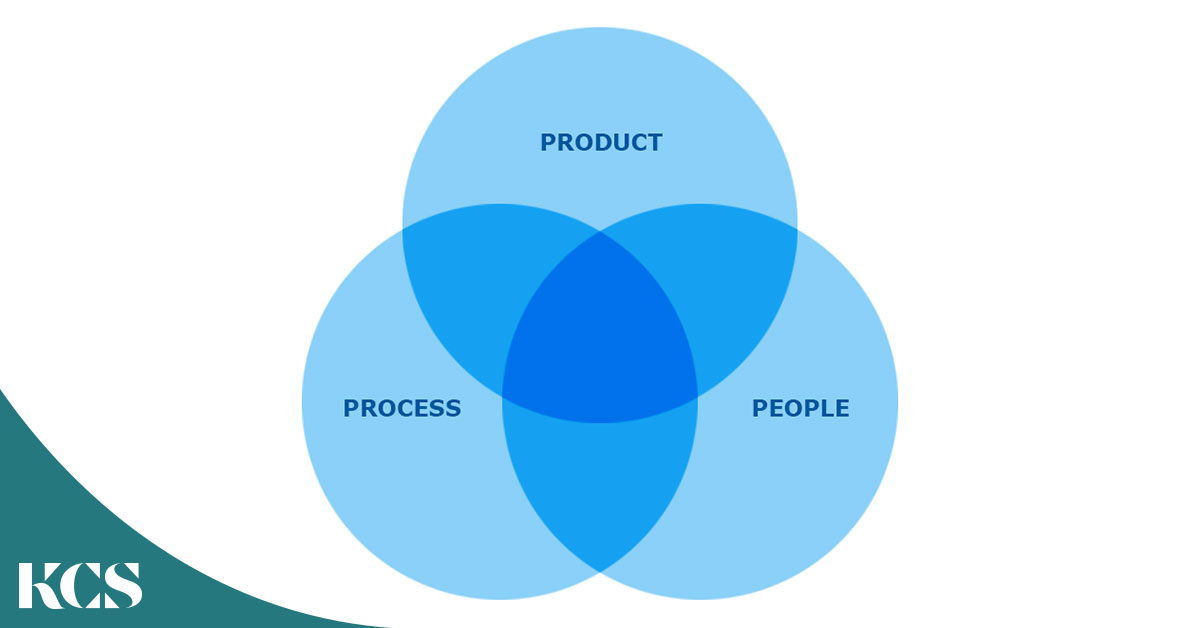
Strategy #3 – Who Is Responsible For The Changes?
Key stakeholders and the availability of resources to implement the change is critical to the success of the change within your business. A prime example that we observe frequently includes new software (Change) being bought to solve internal challenges that is never used because;
- Key stakeholders were not involved in the decisions and;
- No resources were supplied for implementation
So no one has any motivation towards a future of the software benefiting them (Strategy #1) and it’s put in the “Too Hard” basket because the integrity of current systems will be impacted (Strategy #2) which will directly impact their time and priorities (Your products / services & clients).
When assessing the change during this strategy, take an indepth look at current responsibilities and the allocation or reallocation of responsibilities and authorities to accommodate the change. Some key responsibilities may include;
- Change Originator – Person who believes change is necessary
- Change Facilitator – Person designated to control and oversee the change
- Change Creator – Person who builds the data, workflows, policies, procedures etc
- Change Educator – Person who understands the expectations, builds the training guides and educates the key stakeholders
- Change Communicator – Person responsible for communicating with all key stakeholders
Some of these responsibilities may be rolled into one and you may need to hire more employees if current employee workloads are full and cannot accommodate the change requirements.
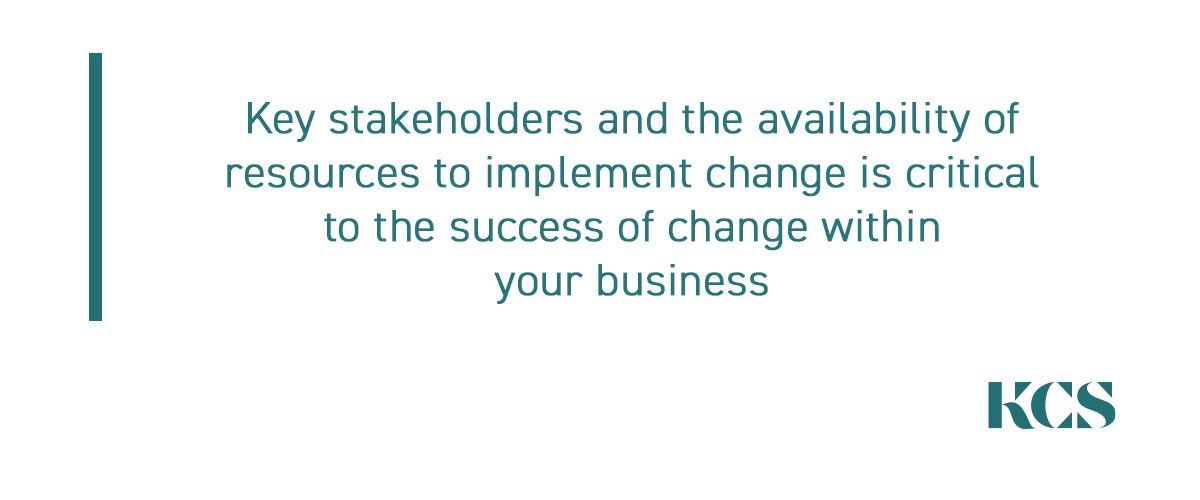

Strategy #4 – How Are You Managing Expectations & Training?
Like any new process, software, etc being introduced into your business, you can’t just expect everyone to understand, learn or implement change for themselves as much as we’d love for that to occur. If you’ve engaged your Key Stakeholders during Strategies #1, #2 & #3, you have activaly been managing their expectations and half the battle is won, they are motivated and understand that the change will benefit them very soon.
The final and possibly most important part of Change Management Strategies is to train your Key Stakeholders in the change. This will provide;
- Understanding of what changed
- A safe environment to ask questions
- Strengthening of the skills that each person needs to improve as part of the change
- Test the change which will emphasise and reduce any weak links
- The ability to use the new process / tools etc and see the benefits for themselves
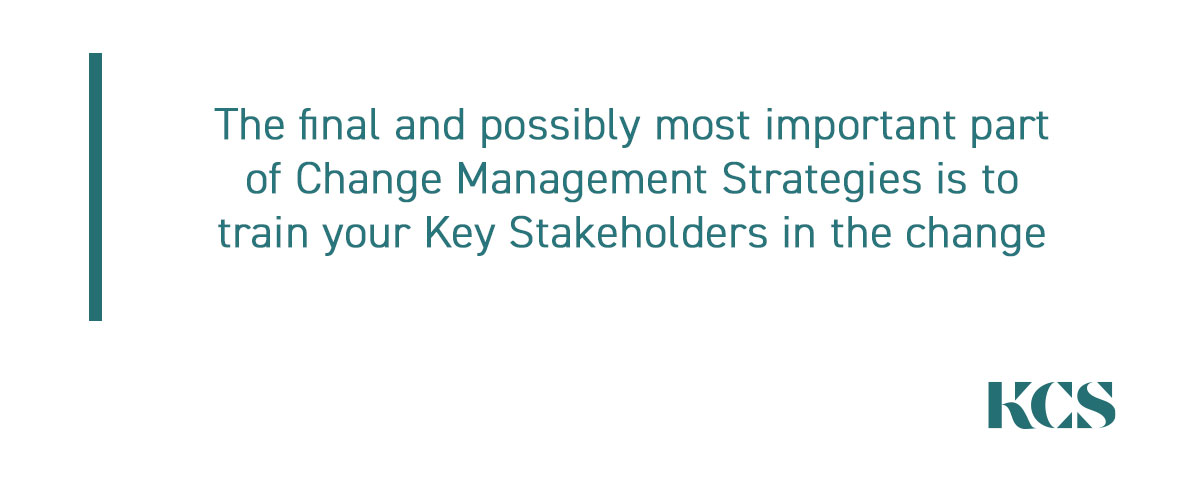
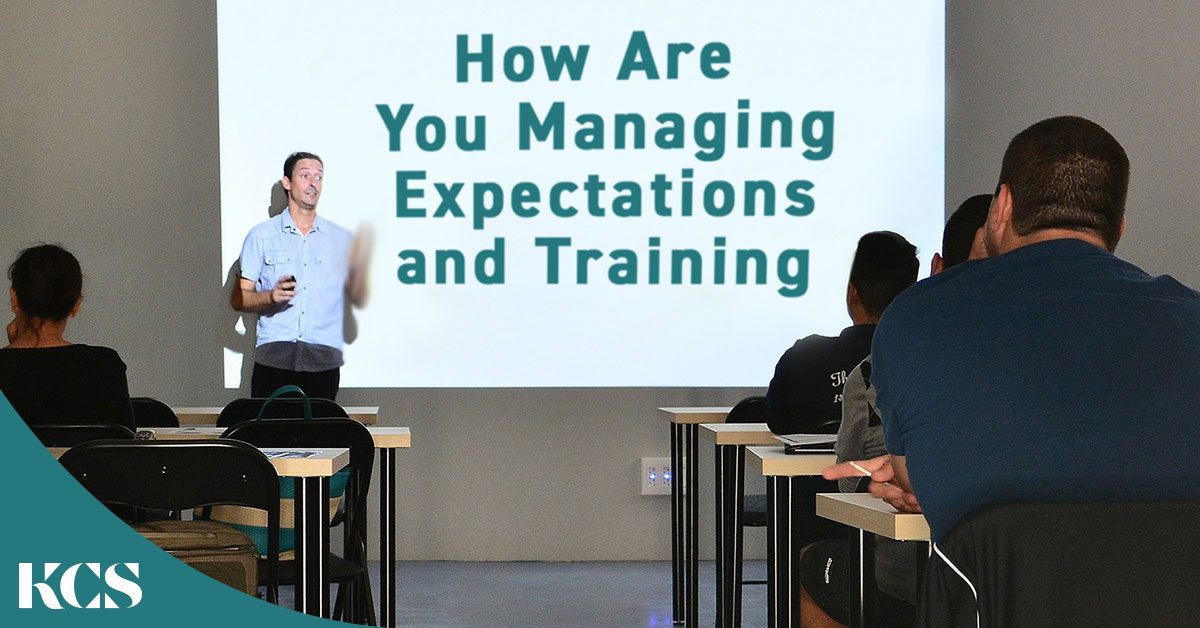
Change Management Can be a Positive Experience
Change equals growth.
Change is important in your business to;
- People – Support your employees to learn new skills, explore new opportunities and exercise their creativity in ways that ultimately benefit you through new ideas and increased commitment.
- Process – Keep your systems and processes alive and continually supporting your people to deliver your product.
- Product – Transform your products / services to ensure they are constantly providing value to your clients in an ever changing environment.
Some documents which may support a change management program in your business include but are not limited to;
- Change Management Procedure
- Risk Management Procedure
- Training Procedure / Program
- Communication Procedure
- Change Register
- Risk Register
- Change Request Form
- Training Attendance Form
Change is scary for most people but with the right strategies, processes and tools, it can be a positive experience! How do you implement change in your business? Tell us about your positive change experiences in the comments.


nice information here